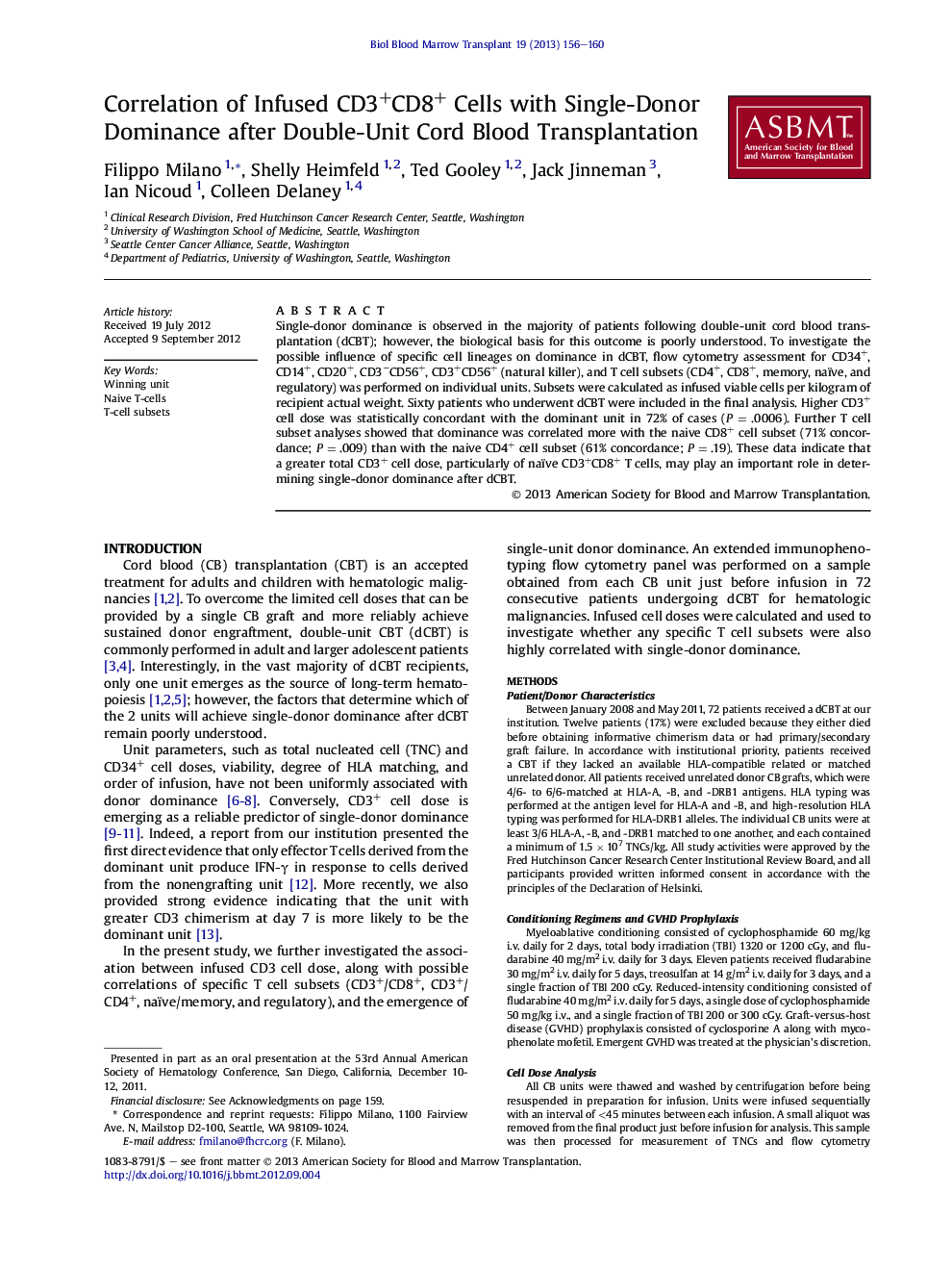| Article ID | Journal | Published Year | Pages | File Type |
|---|---|---|---|---|
| 2103230 | Biology of Blood and Marrow Transplantation | 2013 | 5 Pages |
Single-donor dominance is observed in the majority of patients following double-unit cord blood transplantation (dCBT); however, the biological basis for this outcome is poorly understood. To investigate the possible influence of specific cell lineages on dominance in dCBT, flow cytometry assessment for CD34+, CD14+, CD20+, CD3−CD56+, CD3+CD56+ (natural killer), and T cell subsets (CD4+, CD8+, memory, naïve, and regulatory) was performed on individual units. Subsets were calculated as infused viable cells per kilogram of recipient actual weight. Sixty patients who underwent dCBT were included in the final analysis. Higher CD3+ cell dose was statistically concordant with the dominant unit in 72% of cases (P = .0006). Further T cell subset analyses showed that dominance was correlated more with the naive CD8+ cell subset (71% concordance; P = .009) than with the naive CD4+ cell subset (61% concordance; P = .19). These data indicate that a greater total CD3+ cell dose, particularly of naïve CD3+CD8+ T cells, may play an important role in determining single-donor dominance after dCBT.
